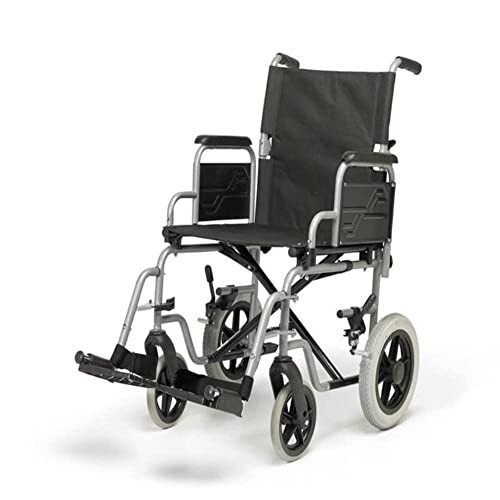7 Simple Changes That'll Make A Huge Difference In Your Buying Mobility Scooter
A Comprehensive Guide to Buying a Mobility Scooter
Mobility scooters have become an important tool for numerous individuals looking to improve their self-reliance and mobility. With buy mobility scooters of models and functions offered, picking the best mobility scooter can be intimidating. This post offers a useful guide to assist consumers browse their alternatives, examine their needs, and make an informed purchase.
Comprehending Mobility Scooters
Mobility scooters are electric vehicles developed for individuals who experience mobility obstacles. They are particularly advantageous for seniors, those with specials needs, or people recovering from injuries. Mobility scooters can vary extensively in regards to design, functions, and pricing.
Kinds Of Mobility Scooters
Before embarking on a purchase, it's necessary to understand the various kinds of mobility scooters available:
Three-Wheel Scooters:
- Generally more maneuverable in tight spaces
- Lightweight and portable
- Suitable for indoor use
Four-Wheel Scooters:
- Offer higher stability and balance
- Appropriate for outdoor use over various surfaces
- Typically have a longer battery life
Foldable/Portable Scooters:
- Designed to be quickly carried and saved
- Can frequently fit in the trunk of a car
- Ideal for those who travel frequently
Heavy-Duty Scooters:
- Built to accommodate bigger individuals
- Typically come with more robust features for outside usage
- Usually equipped with bigger batteries for extended range
Aspects to Consider When Buying a Mobility Scooter
1. Weight Capacity
Select a mobility scooter that can support the user's weight. Most scooters have a weight limit varying from 250 to 500 pounds. It is crucial to ensure that the scooter can accommodate the user conveniently.
2. Variety and Battery Life
The range is how far the mobility scooter can travel on a single charge. Common varieties vary in between 10 to 30 miles. Think about the user's daily activities and select a scooter with an ideal range.
3. Scooter Dimensions
Consider the size of the scooter, including its weight and measurements. A more compact scooter may be ideal for narrow hallways and tight areas, while bigger designs use extra stability and comfort.
4. Surface Capability
Assess where the scooter will primarily be utilized. If the user prepares to travel mostly on pavement, a lightweight model might be adequate. Nevertheless, if the user needs to traverse gravel or irregular surface areas, think about a four-wheel scooter developed for off-road use.
Top Features to Look For
Comfort
- Adjustable Seats: Look for scooters with cushioned and height-adjustable seats to make sure convenience during travel.
- Armrests: These boost safety and assistance while browsing.
Security and Visibility
- Headlights and Taillights: Essential for nighttime use.
- Turn Signals and Reflectors: Improve presence and security while on the roadway.
User-Friendly Controls
- Joystick or Drive Controls: These must be intuitive and easy to control.
- Easy-to-Read Displays: A control panel that reveals battery life, speed, and distance can improve the user experience.
Additional Features
- Storage Compartments: These provide included benefit for bring personal items while on the go.
- Weather Protection: Consider designs with rain covers or windscreens if utilized in variable climate condition.
Cost Considerations
When budgeting for a mobility scooter, prices can vary anywhere from ₤ 500 to over ₤ 5,000 depending upon the model, features, and brand name. Extra expenses may consist of:
- Extended Warranty: Protects versus problems and can save money in the long run.
- Accessories: Optional features, such as updated seats, lights, or storage options.
Function
Cost Range
Basic Models
₤ 500 – ₤ 1,500
Mid-Range Models
₤ 1,500 – ₤ 3,000
High-End Models
₤ 3,000 – ₤ 5,000
Funding Options
Many retailers provide financing plans, and some city government efforts may offer grants or support for those in requirement. Examine prospective monetary help with community resources or mobility service companies.
FAQs about Buying a Mobility Scooter
What is the distinction between a mobility scooter and a wheelchair?
Mobility scooters are motorized and allow users to navigate separately, while wheelchairs might require physical help or manual operation.
How do I keep a mobility scooter?
Regular maintenance includes examining battery life, cleaning the scooter, and inspecting tires and brakes. Constantly describe the user manual for particular standards.
Can mobility scooters be utilized inside your home?
Yes, many models are developed for both indoor and outdoor usage. However, three-wheel scooters tend to be much better fit for indoor navigation due to their tighter turning radius.
Are mobility scooters covered by insurance coverage?
Some insurance coverage plans cover a part of the expenses for mobility scooters if they are deemed clinically essential. Contact your company for specific details.
How quick can a mobility scooter go?
Most mobility scooters have a maximum speed varying from 4 to 8 miles per hour. Nevertheless, the proper rate might differ depending on regional policies.
Getting a mobility scooter can substantially boost one's self-reliance and lifestyle. By understanding the types, features, and expenses related to mobility scooters, potential buyers can make educated choices that fit their needs and choices. Personalization and thorough research study are essential to making sure satisfaction with this important investment.
